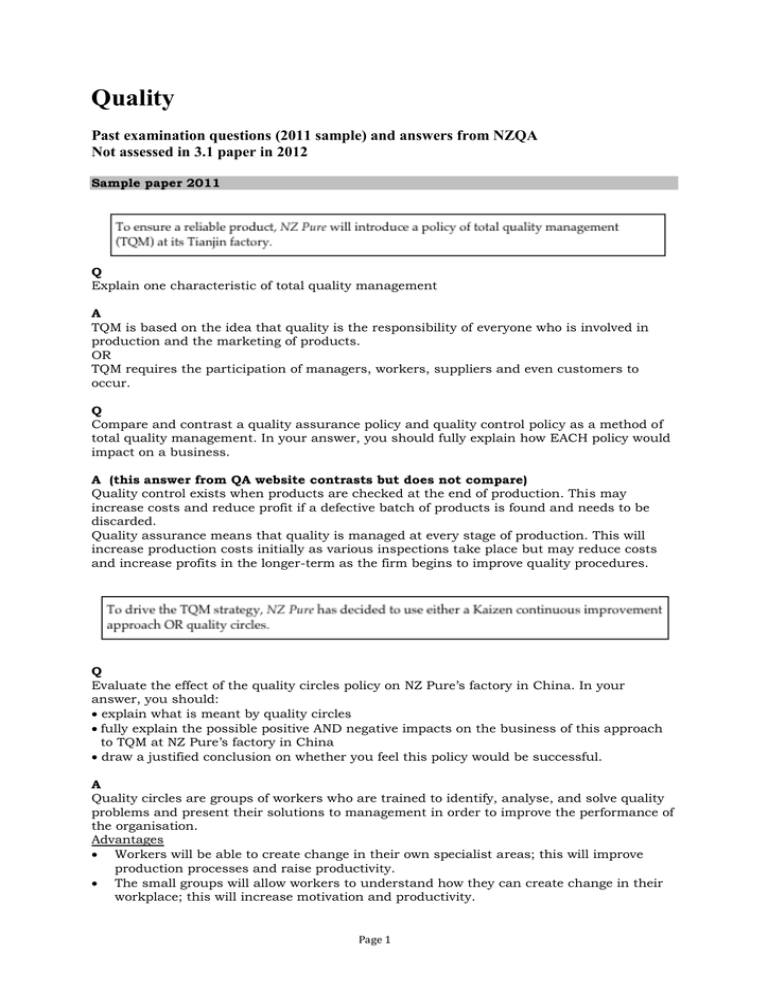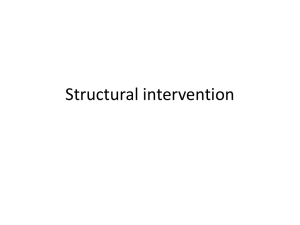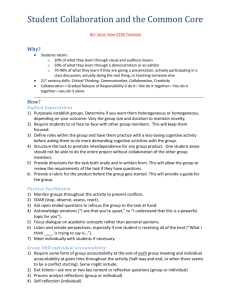Quality - Secondary Social Science Wikispace
advertisement

Quality Past examination questions (2011 sample) and answers from NZQA Not assessed in 3.1 paper in 2012 Sample paper 2011 Q Explain one characteristic of total quality management A TQM is based on the idea that quality is the responsibility of everyone who is involved in production and the marketing of products. OR TQM requires the participation of managers, workers, suppliers and even customers to occur. Q Compare and contrast a quality assurance policy and quality control policy as a method of total quality management. In your answer, you should fully explain how EACH policy would impact on a business. A (this answer from QA website contrasts but does not compare) Quality control exists when products are checked at the end of production. This may increase costs and reduce profit if a defective batch of products is found and needs to be discarded. Quality assurance means that quality is managed at every stage of production. This will increase production costs initially as various inspections take place but may reduce costs and increase profits in the longer-term as the firm begins to improve quality procedures. Q Evaluate the effect of the quality circles policy on NZ Pure’s factory in China. In your answer, you should: explain what is meant by quality circles fully explain the possible positive AND negative impacts on the business of this approach to TQM at NZ Pure’s factory in China draw a justified conclusion on whether you feel this policy would be successful. A Quality circles are groups of workers who are trained to identify, analyse, and solve quality problems and present their solutions to management in order to improve the performance of the organisation. Advantages Workers will be able to create change in their own specialist areas; this will improve production processes and raise productivity. The small groups will allow workers to understand how they can create change in their workplace; this will increase motivation and productivity. Page 1 Quality circles increase communication between management and workers, therefore raising productivity. Disadvantages Takes a great deal of time to implement; there has to be good communication to start off with. This may decrease short-term profitability. Managers need to embrace the idea even though they lose some control of the business. This may reduce their effectiveness. Workers have to feel their ideas are accepted. Conclusion Quality circles are a good idea to implement if the managers and workers can communicate effectively together. OR Quality circles are not a good idea because NZ managers may not be able to communicate effectively with their Chinese workers. Exam 2012 Q Explain why quality management is important to the performance of a business. A Quality Management will increase the quality of production. This may raise revenue as sales increase / costs decrease, as fewer goods are returned because of faults due to poor quality. Q Fully explain the impacts that moving to a TQM strategy might have on Relationships between managers and workers in the production process The firm’s relationships with suppliers providing materials and other resources A Workers and managers would have a closer professional relationship; Total Quality Management (TQM) means that quality is the responsibility of everyone in the business (Explain). This would require greater cooperation between workers and management (Fully explain). Suppliers will be encouraged to take responsibility for supplying resources that meet the standards of Winter’s Dawn’s production requirements. They may incur greater expenses (Explain), which would reduce profitability and may force them to charge a higher price (Fully explain). Q Name a business operating in an international environment that you have studied in depth. Evaluate the best strategy for quality management that could be employed by your named business or a department of that business. In your answer you should Explain two quality management strategies that have been or may be implemented in the business or department of the business Fully explain one advantage and one disadvantage of each strategy Draw a justified conclusion as to which strategy you feel is more effective. Page 2 A [Icebreaker was used as the context] Strategy 1 They could introduce quality circles. This occurs where small teams of workers come together to solve a quality problem. Quality circles will bring workers together from different parts of the business to solve problems. This is a benefit, because problems can be highlighted by management and ideas can be created by workers (Explain). This will make changes more in line with management objectives (Fully explain). A negative aspect of quality circles is that workers may be taken away from their normal tasks, which could reduce productivity in other areas of the business (Explain). This, in turn, would reduce profitability (Fully explain). Strategy 2 They could implement a system of continuous improvement (Kaizen). This is where workers are encouraged to improve quality by individually suggesting improvements to products or processes. A positive aspect of continuous improvement is that it allows workers to improve areas of the business they have a speciality in. This will enable waste to be eliminated (Explain) and productivity to be increased (Fully explain). A negative aspect of continuous improvement is that workers may become drained and demotivated by continuous change (Explain). This may reduce productivity (Fully explain). Conclusion Continuous improvement would be the better strategy, because it involves all people across the business. Page 3






